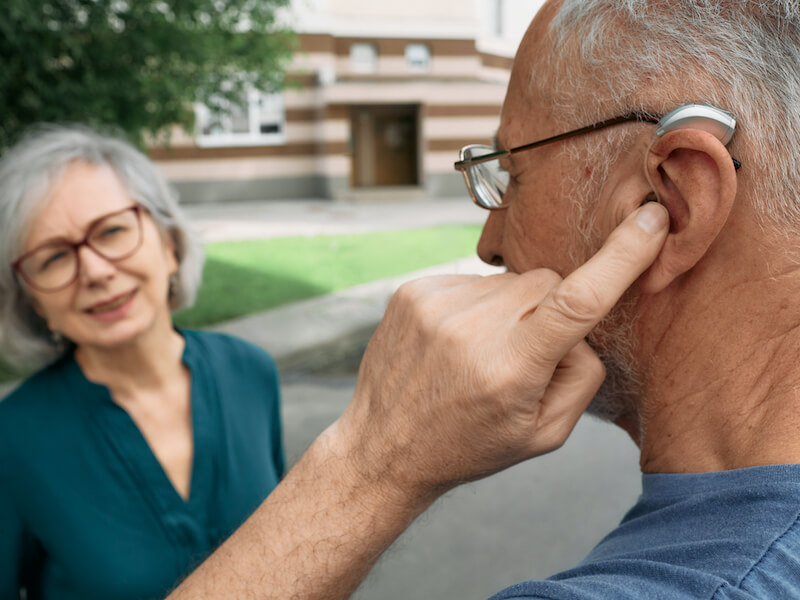
Have you ever had your internet cut just as you’re getting to the best part of your favorite Netflix show? Instead of finding out who won the baking show, you have to watch a never-ending spinning circle. And so you just wait. Is it your internet provider, modem, router, or perhaps it will simply come back on its own? It sort of stinks.
When technology malfunctions, it can be really frustrating. The same is certainly true of your hearing aids. The majority of the time, your hearing aids will provide you with the means to remain connected to loved ones, have discussions with co-workers, and keep up with your neighbors.
But when they quit working, your hearing loss symptoms can abruptly become much more frustrating. The technology you’re depending on has let you down. How do hearing aids just quit working? So how do you cope with that? Here are the three prevalent ways your hearing aids can fail and how to troubleshoot and identify them.
Hearing aids can often have three common issues
Hearing aids are complex devices. Even still, there are some common issues that people with hearing aids might encounter. Here’s what might be causing those issues (and what you can do to fix them).
Whistling and feedback
Maybe you suddenly start to hear a terrible high-pitched whistling while you’re attempting to have a chat with a friend or family member. Or perhaps you notice some feedback. You begin to think, “this is weird, what’s up with this whistling”?
Here are three potential issues that could be causing this feedback and whistling:
- Your hearing aids might not be sitting in your ears correctly. Try taking them out and putting them back in. You can also try reducing the volume (if this works, you might find some short-term relief, but it also likely means that the fit isn’t quite right and you should talk to us about it).
- The functionality of your hearing aid can be affected by earwax accumulation in your ear canal. You’ll find this comes up fairly regularly. That includes causing your hearing aids to whistle or feedback. If possible, you can attempt to clean some earwax out of your ear or talk to us about the best method to do that (do not use a cotton swab).
- For individuals who wear behind-the-ear hearing aids, the tubing that attaches your earmold with your hearing aid might have become compromised. Try to examine this tubing as well as possible and make certain nothing is loose and the tube doesn’t appear damaged.
Depending on the underlying cause of the feedback, we can help you resolve these problems if you can’t figure them out on your own.
No sound coming from your hearing aids
Your hearing aids are supposed to make, well, sound. That’s what they’re created to do! So if you find yourself thinking, “I can’t hear any sound coming from my hearing aid,” well, then something is definitely wrong. So what could be the explanation when hearing aids work but no sound comes through? Here are some things to look for:
- Power: Everybody forgets to turn their hearing aids on once in a while. Be sure that isn’t the issue. Then you can cross that of the list of possible issues.
- Your settings: Cycle through the custom settings if your device includes them. Your hearing aids might think you’re in a huge room when you’re actually in a little room because the setting isn’t right. The sound you’re hearing may be off as a result.
- Batteries: If you have rechargeable batteries, make sure that they are fully charged. And whether your batteries are rechargeable or not, it might be worth switching them out for fresh ones.
- Earwax buildup: Here we go again with the earwax! Have a close look to see if you come across any earwax on the speakers or microphone. Keep your device very clean.
If these steps don’t correct your problems, we might have the solution. We’ll be able to help you determine the next steps, and whether maintenance, repair, or replacement is required.
When you have your hearing aids in, your ears hurt
Perhaps your hearing aids are fine functionally but they hurt when they’re in your ears. And you’re most likely wondering why your hearing aids would hurt your ears. This kind of discomfort isn’t exactly conducive to using your hearing aids on a day-to-day basis. So, what could be causing it?
- Time: Getting used to your hearing aids will take a little while. Each individual will have a different adjustment period. When you first get your new hearing aids, we can help you get a reasonable idea of the adjustment period you can expect. Also, speak with us about any discomfort you may be experiencing.
- Fit: The fit of the device is the most obvious issue. Naturally, when the fit is nice and tight, your hearing aids will work best. So when your hearing aids aren’t fitting quite right, there can be some discomfort. Some hearing aid models can be fit to the specific shape of your ears. Over the long run, you will have fewer issues if you have a good fit. If you come see us, we can help you get the best fit for your device.
Bypass problems with a little test drive
One of the best ways to avoid possible problems with hearing aids is to take them for a bit of a test run before you decide. In most cases we’ll let you test out a set of devices before you determine that’s the set for you.
Choosing the correct hearing aids, adjusting them to fit your needs, and helping with any ongoing problems you might have, are all things we will help with. In other words, when your devices stop working, you’ll have a resource that can help!
And that’s most likely more dependable than your internet company.